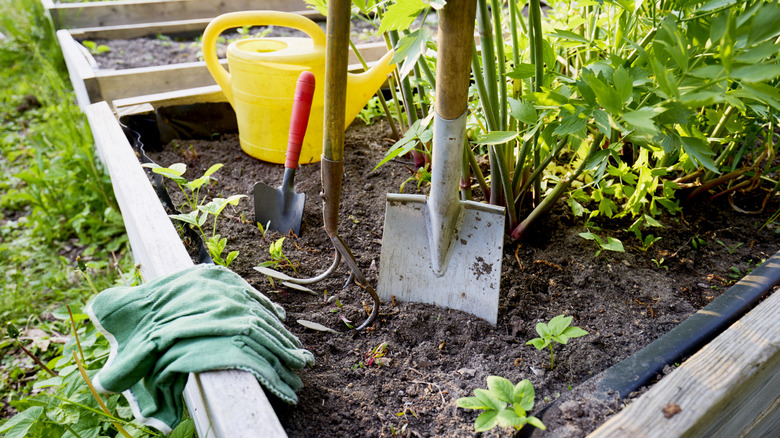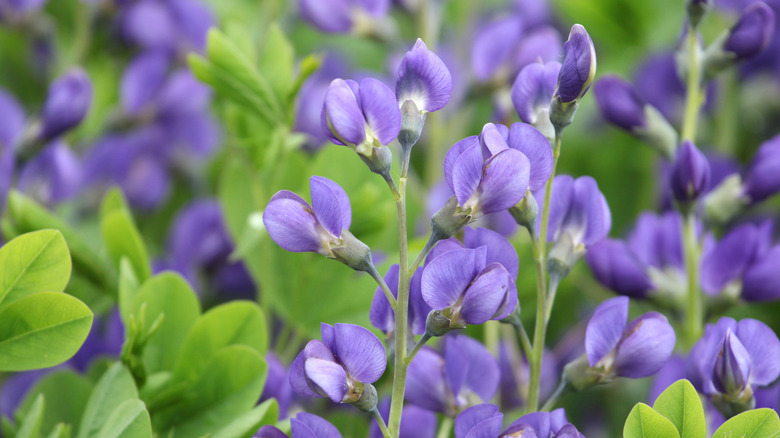The Unique Perennial You Can Seed In September For Gorgeous Spring Blooms
Even as the flowers in your garden begin to fade in early fall, it's never too early to think about next spring's blooms. If you want gorgeous purplish-blue flowers next spring, then think about planting false indigo in September. False indigo (Baptisia) is a North American native perennial that will come back year after year, yet it's not always top of mind for many gardeners. Though, it should be.
False indigo is a seriously no-fuss plant that can thrive in most any soil and can tolerate a wide range of moisture levels in the soil from damp to dry. False indigo doesn't mind its soil pH slightly acidic, either. It's such a versatile plant, that the Perennial Plant Association named it the plant of the year in 2010. It's called false indigo because people used it to make bluish dye for fabrics when "real" indigo (Indigofera tinctoria) wasn't available.
Thriving in USDA Plant Hardiness Zones 3 to 9, false indigo is an all around useful perennial to add to your garden bed. It actually comes in a variety of colors, including blue (of course), but also gold and white. While you can expect its flowers to stick around for just a few weeks every season, its blue-green leaves stay around all through fall. And this hardy plant even goes so far as to fix nitrogen from the air into the soil, which makes for healthier garden soil for its neighbors as well. Plant false indigo with some of your other perennial favorites, like yarrow and salvia.
Do this when planting false indigo
If you live in a growing zone with a mild winter, September is a great time to plant false indigo. Their seeds will use the cold period as a signal to germinate in the spring. But be aware that it takes much longer to get flowers when growing baptisia from seed. You may have to wait a couple of years before you even see the first flower. And during that time, young false indigo might look more like a weed than a flower. While it may take about a year to settle in and really get established in your garden, you will get a faster turn around by planting a mature plant.
Once it does begin to flower, blooms appear along a long, thick stalk with pretty, five-petaled flowers. False indigo is a plant in the pea family, so after the blooms fade, expect black seed pods to appear. You can keep the pods on all winter long if you'd like, especially if you're going for a striking goth garden effect.
Indigo grows long and deep roots, which helps it find water during dry spells. This also means, however, that you probably should avoid moving false indigo once it's mature. Don't try to divide this plant or you might end up damaging it. If you plant false indigo in full sun, expect it to grow as high as about 4 feet tall. If you've planted it in partial shade, then your flowers might become floppy and need to be staked. As an added bonus, false indigo also happens to be deer resistant and have few insects targeting it. Really, false indigo flowers hardly need much attention, other than occasional watering during dry spells.

